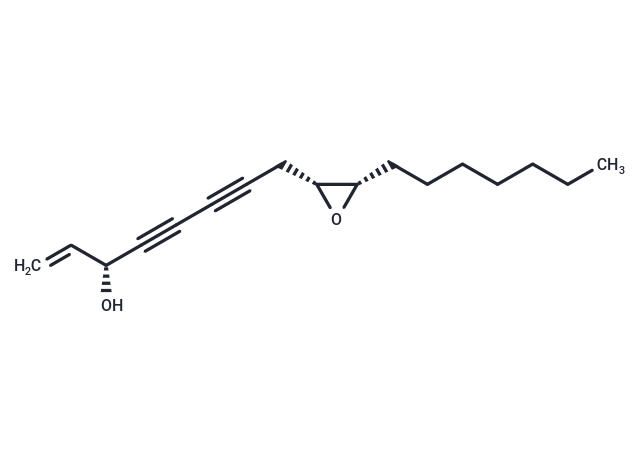Shopping Cart
- Remove All
 Your shopping cart is currently empty
Your shopping cart is currently empty

Panaxydol has anti-cancer activity, can inhibit the growth and apoptosis of cancer cells, the signaling mechanisms involve a [Ca(2+)](i) increase, JNK and p38 MAPK activation, cAMP, MAP kinase and ROS generation through NADPH oxidase and mitochondria.

| Pack Size | Price | Availability | Quantity |
|---|---|---|---|
| 1 mg | $220 | Backorder | |
| 5 mg | $1,050 | Backorder |
| Description | Panaxydol has anti-cancer activity, can inhibit the growth and apoptosis of cancer cells, the signaling mechanisms involve a [Ca(2+)](i) increase, JNK and p38 MAPK activation, cAMP, MAP kinase and ROS generation through NADPH oxidase and mitochondria. |
| Molecular Weight | 260.37 |
| Formula | C17H24O2 |
| Cas No. | 72800-72-7 |
| Relative Density. | 0.999 g/cm3 (Predicted) |
| Storage | Powder: -20°C for 3 years | In solvent: -80°C for 1 year | Shipping with blue ice. |

Copyright © 2015-2025 TargetMol Chemicals Inc. All Rights Reserved.